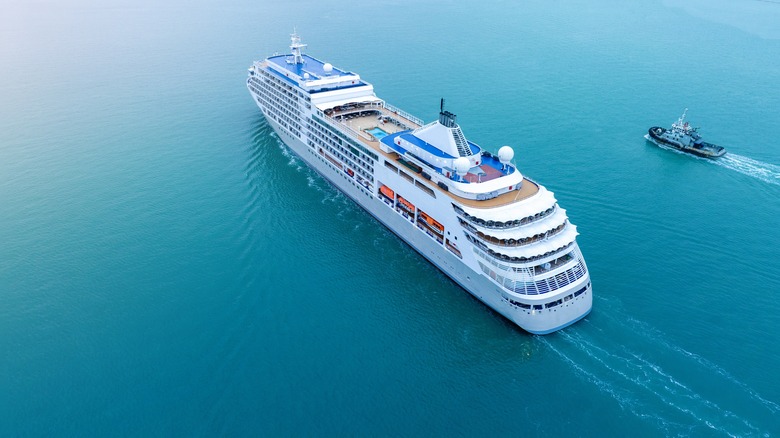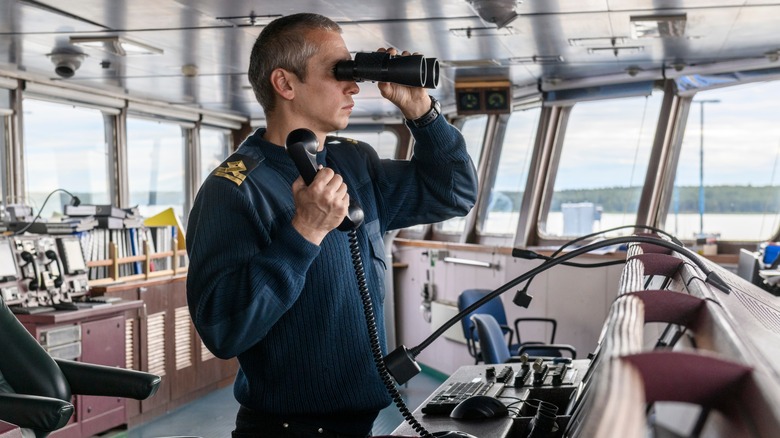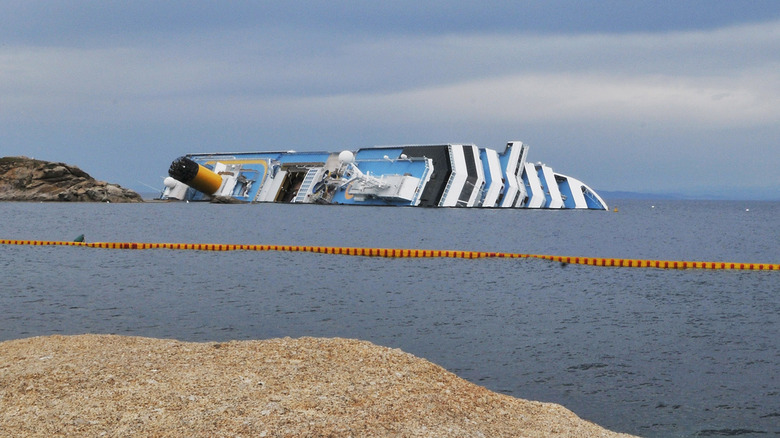The Interesting Way Cruise Ships Float Even Though They're So Heavy
Traveling the ocean aboard a cruise ship is a great time for contemplation, but something few may consider is how they stay afloat, which is an important question when they are getting bigger all of the time. The Royal Caribbean's Icon of the Seas, for example, is the biggest cruise ship in the world and is due to set sail in January 2024. It is 365 meters long, with 20 decks, and weighs 250,800 gross tonnes. On top of all that, it houses the largest waterpark in the sea.
It is hard to believe that these floating cities stay upright, but it's actually just simple science that answers the question of how cruise ships float. The volume of liquid that they displace is the same as their mass so as they move through the ocean, the water tries to fill the space. This energy keeps it in motion. It is clearly a design that works, as it is uncommon for a cruise ship to sink.
How cruise ships avoid sinking
In the 32 years between 1980 and 2012, only 16 cruise ships have sunk. It is more common for them to run aground, which has happened to 98 leisure liners from 1972 to 2011, an average of 2-3 per year. Cruise ships can also get stranded due to issues like engine problems, which is when passengers need to be rescued. These are some reasons why some people may never take a cruise. However, there are numerous safety protocols in place to prevent it.
As sea conditions are one of the biggest worries for cruise captains, they use dedicated weather-routing technologies to track them. This data updates regularly, so if there are big waves, a liner may dock or avoid a certain port to keep everyone aboard safe. Another essential design feature that keeps the ship upright is storing all the heavy machinery and water supplies in the bottom section of the boat. The top of the ship is built as openly as possible to let wind pass through without tipping it over. Nonetheless, despite all these safety features, cruise ships do sometimes sink.
How cruise ships do sink
Most people know of the famous Titanic sinking in 1912 when it famously hit an iceberg. Since then, vessels may have become safer, but certain things can still sink them. A recent cruise ship to sink was the Costa Concordia in 2012 after hitting rocks that pierced its hull. It killed 32 people, and the captain was found guilty of manslaughter. Before that, the MS Sea Diamond hit a reef in Santorini in 2007 and later sank. Despite a rescue mission, two people went missing, presumed to have drowned.
One of the worst cruise ship disasters of the 20th century was when the Estonia sank in the Baltic Sea. A technical problem with the bow visor lock meant that it let in water, and 852 people died when it went down. That said, it takes a lot to bring down a cruise ship, but when it lets in water, it can have horrendous consequences. Thankfully, most cruise liners depart and return daily without a hitch, so these accidents will hopefully become rarer as safety technology and procedures improve.


